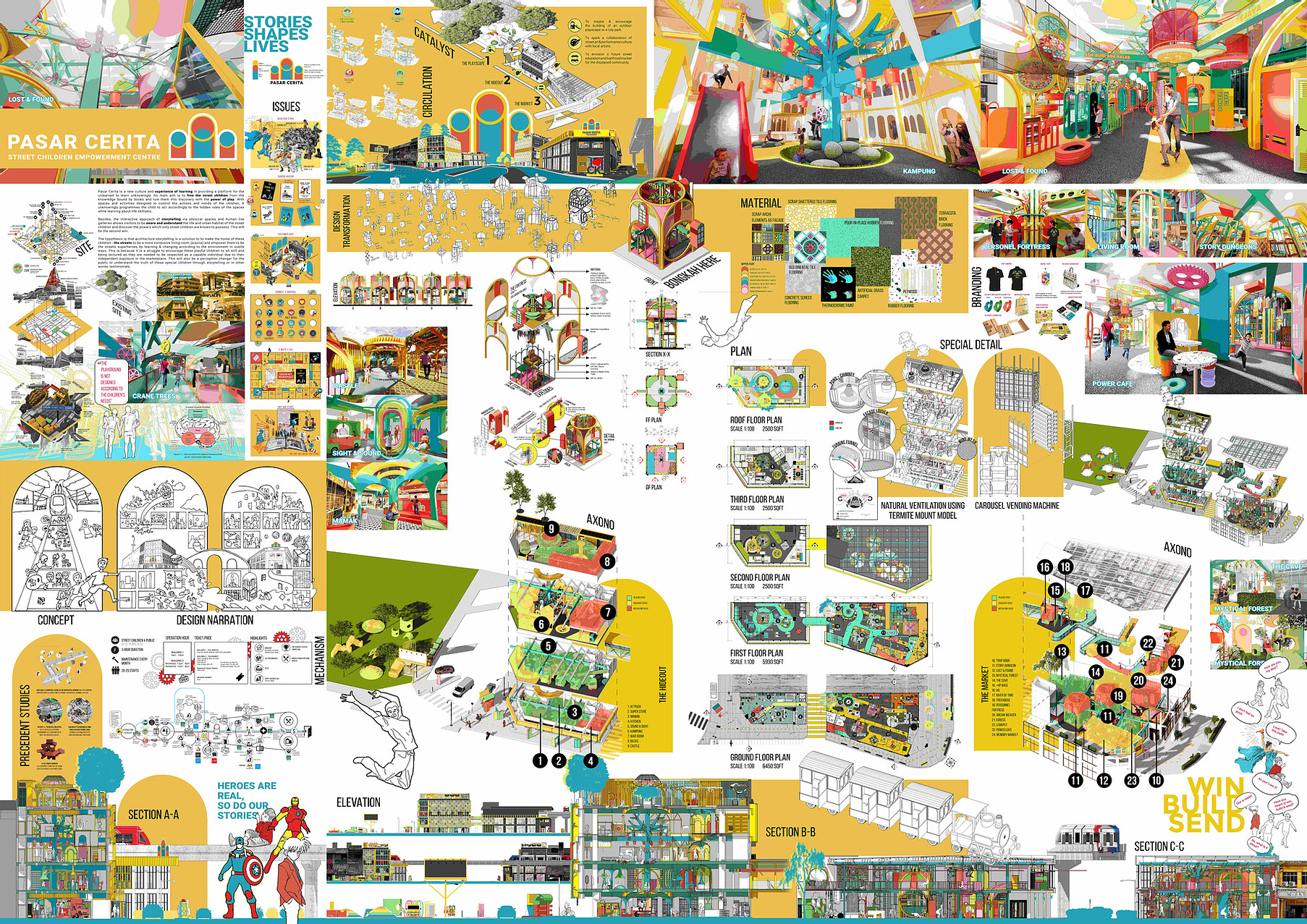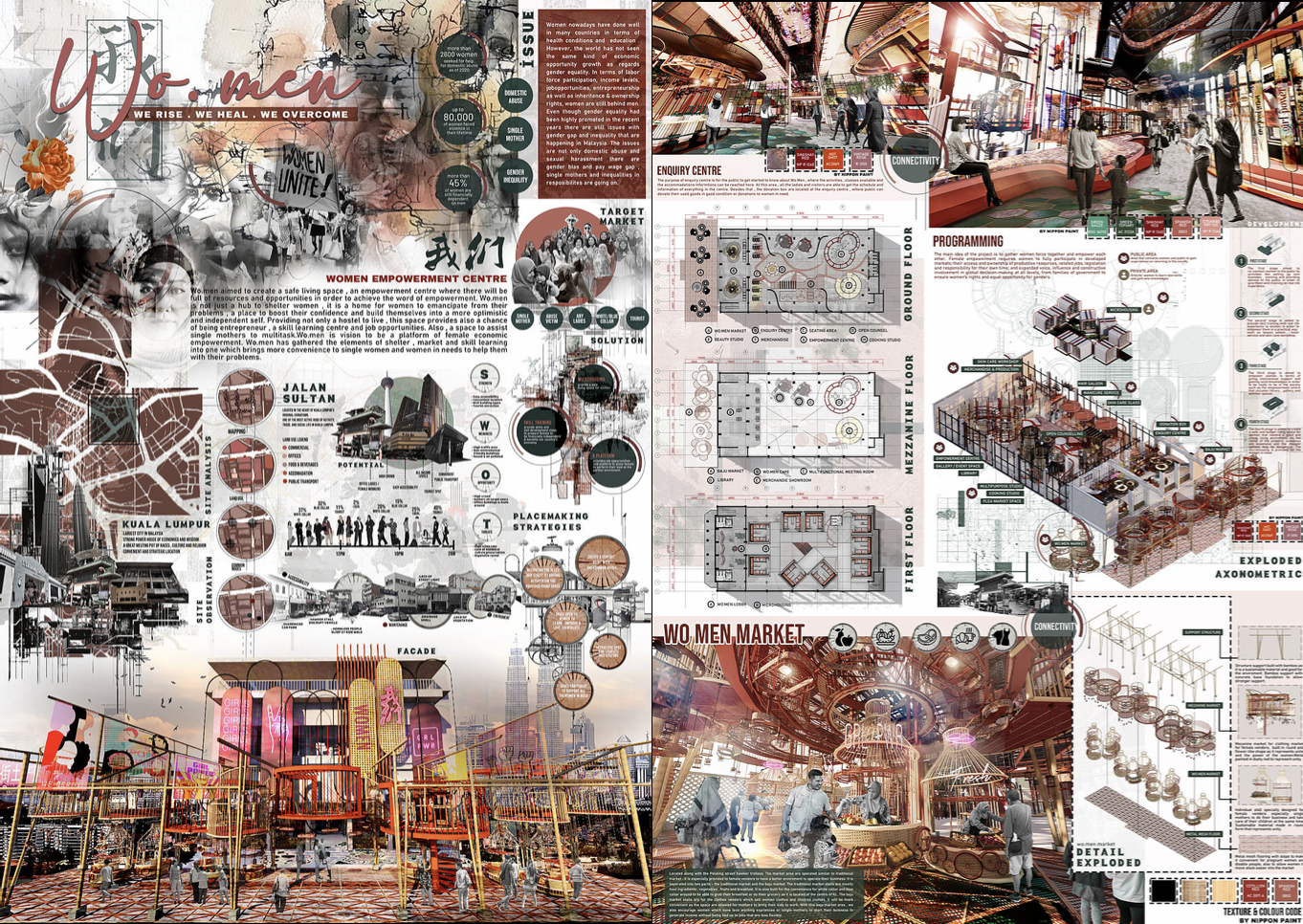The students from Bachelor of Arts (Hons) in Interior Architecture at Taylor’s University recently wrapped up their final studios and exams. What a fascinating semester it has been. Students were used to working in groups, spending long hours in the studio, building up multiple physical concepts and scaled models with a series of developmental sketches and printed presentation drawings during design reviews. But the required social distancing required the closure of studios that then necessitated migration to online portals. The design process is very much dependent on social interaction in order to encourage creativity to flourish. Can online portals adapt to studio pedagogy? How to get the students — not least of all the international students who returned home to different time zones after campuses were locked down — onto the same schedule? Can the students adjust themselves quickly enough while producing quality work with the changing landscape?
Recognising the need for the public, interior designers, architects, and industry players to continue interacting and engaging each other even with the present Covid-19 pandemic situation, The Design School, Faculty of Innovation and Technology at Taylor’s University, launched a virtual reality exhibition named VR.TU 2020. “VR” stands for VIRTUAL REALITY while “TU” stands for Taylor’s University. VR.TU showcases the energy and excitement of 28 young talents from the final semester of Bachelor of Arts (Hons) in Interior Architecture, all of whom are exhibiting the projects and achievements they have made over the course of three and a half years.
When the pandemic happened, everything had to go online and become virtual. Communication, arrangements, and planning were harder than we thought. We wanted to offer something more than the usual presentations. It took us a bit of time to figure out the best ways to bring people into a digital environment to witness and interact in our VR.TU. It was tough at first but we quickly capitalized on the available virtual technologies to work together and manage all the processes remotely. The virtual exhibition space depicted is based on our very own studio at Block E Level 5 Taylor’s Lakeside Campus. “We attempted to bring it to you to experience and enjoy from the comfort of your own place,” said Evva Lim, exhibiting participant and project manager for VR.TU.

Liberty Woon from Sabah added that this final year-long project opened up ideas that she never could have realized without the opportunity of research. “I realized that interior architecture can change lives and subtly motivate the users to perform better by incorporating spatial and colour psychology. I had the opportunity to explore a natural way of ventilation inspired by termites in my project. I realized my dream to incorporate physics into the spaces for maximum ventilation is plausible — factors that are indeed for the betterment of design. We have always wanted to do something bigger than ourselves, and I believe there is still room out there for such designs.”
Sharmaine Fiona Anak Raymond Braoh and Familia Trini Anak Desmond from Sarawak said that they appreciated participating in online group learning to discuss, synthesize, and learn from each other and that they learned best by doing. They developed a common platform online so that the students could work together and be able to freely update work in progress, exchange thoughts, and give feedback just as they would in the actual campus environment.
Aishah Sufiah Adham Qalid, a Kuala Lumpur lass, noted that studying online is more rigorous but offered greater flexibility. She added that she didn’t feel alone. The whole class realized that even though they were at a distance, they could support and push each other, creating long lasting connections beyond the course.
International students Catherine Widyaputri from Indonesia and Nayashaan Mohamed from Mauritius added that focus, time management, family support, and guidance from lecturers are important factors that assisted her with the new norm through successful remote collaboration.
The VR.TU 2020 class was led by module coordinators Muzamil Mutalib, Mohd. Romzi Ali, and IDr Mohd. Redzwan Hisham Bidin, all of whom were awarded as Best Mentor during 2016, 2017 and 2019 Asia Young Designers Award, Interior Design Category presented by Nippon Paint.


VR.TU was officially launched by Professor Dr. David Asirvatham, Executive Dean, Faculty of Innovation and Technology, accompanied by Dr. Pouline Koh, Head of The Design School, and Invited Guest of Honour Ar. Hj. Mustapha Mohd Salleh, Chairman, Council of Accreditation of Architectural Education Malaysia (CAAEM). “Digital media plays a vital role in creativity. They are tools that support the creative process. The objective of this exhibition is to showcase the works of these young talents as well as to provide a platform for incubation of ideas. It also provides opportunities for our students to connect with a wide range of local and international partners and potential employers. As for the audience, it is an opportunity to experience some great quality work done by our students. “The exhibition is a showcase that proves that Taylor’s University is able to produce high calibre graduates with skills and attributes needed by the creative industries,” said Professor Dr. David Asirvatham.
Dr. Pouline Koh added that the virtual exhibition shows that the graduates are unique as they have faced unforeseen circumstances and prevailed in a landscape that was previously unimaginable. They have embraced technology and were able to find opportunities and potential in digitisation in the online world in order to showcase in their work in environment and interior design. The interior architecture students at Taylor’s Design School have grown overnight, equipped with a new meaning of discipline, responsibility and independence, and established themselves as Interior Design peers ready to grow with the built environment industry.

The VR.TU 2020 shows the dedication and hard work of members of The Design School while delivering quality and creative education remotely and leveraging a digital platform in Virtual Reality (AR) to create and build virtual space for human interaction. As an accredited programme, we are able to adapt with the Board of Architect’s guidelines throughout the CMCO period.
“Moving the final design review and exhibition online opens up new possibilities of creative solutions in the new norm,” added BIA Programme Director, IDr Nur Diana Mohamed Rosli.
Prepared by Mohd. Romzi Ali and Nur Diana Mohamed Rosli
